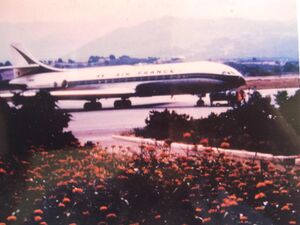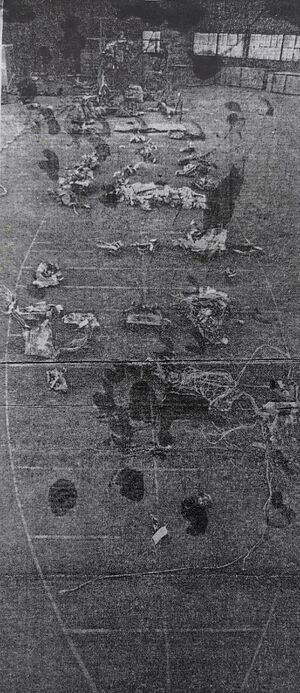Difference between revisions of "Air France Flight 1611"
m |
(|victim_of=cover-up) |
||
| Line 4: | Line 4: | ||
|end=11 September 1968 | |end=11 September 1968 | ||
|fatalities=95 | |fatalities=95 | ||
| − | + | |victim_of=cover-up | |
|ON_cause=fire | |ON_cause=fire | ||
|cause=missile | |cause=missile | ||
| Line 11: | Line 11: | ||
|image=Photo caravelle.jpg | |image=Photo caravelle.jpg | ||
|image_caption=Last photo of the F-BOHB Caravelle taken at Ajaccio airport just before its departure for Nice, September 11, 1968. | |image_caption=Last photo of the F-BOHB Caravelle taken at Ajaccio airport just before its departure for Nice, September 11, 1968. | ||
| − | |constitutes=air crash | + | |constitutes=air crash |
|description=Air crash blamed on fire. The investigation covered up that it was hit by a military missile. | |description=Air crash blamed on fire. The investigation covered up that it was hit by a military missile. | ||
}} | }} | ||
Latest revision as of 17:47, 5 August 2023
 Last photo of the F-BOHB Caravelle taken at Ajaccio airport just before its departure for Nice, September 11, 1968. | |
| Date | 11 September 1968 |
| Location | Mediterranean Sea, France |
| Deaths | 95 |
| Interest of | Pierre Messmer |
| Interests | Bureau of Enquiry and Analysis for Civil Aviation Safety |
| Description | Air crash blamed on fire. The investigation covered up that it was hit by a military missile. |
Air France Flight 1611 (AF1611) was a Sud Aviation SE-210 Caravelle III en route from Ajaccio, in the island of Corsica, to Nice, France, on 11 September 1968 when it crashed into the Mediterranean Sea off Nice after being hit by a military missile, killing all 95 on board.
The Ajaccio-Nice Caravelle crash is the deadliest aviation incident in the Mediterranean Sea to date.[1] The plane was flying over, at higher altitude, than a military missile test area. The press initially published rumors of a missile. The government managed to cover it up by having the inquiry board not include central evidence. Documents and photographs disappeared[2], and the aircraft's black box flight recorder was said to have been damaged, with the recording of flight AF1611 unreadable, although earlier flights were recorded. Wreckage recovered was seized by France's military. Eyewitness statements that went against the wanted conclusion was not recorded.
Official investigation
In December 1972, four years after the event, the inquiry board of the French ministry of transportation published its official report.[3] The report surmised that the loss of the aircraft had been caused by a fire in the passenger toilet caused either by a defective water heater or a cigarette discarded in a waste bin. This rejected the suggestion of any missile strike, basing its findings on the aircraft's survival time after the pilot's initial report to air traffic control of a fire on board, the examination of the wreckage recovered from the seabed, knowledge of a similar accidental fire in another Sud Aviation Caravelle, and the declaration by the French defence ministry that there were no surface ships in the area capable of launching missiles.
Military testing area
The Caravelle flew near the Île du Levant test center, where new missile tests are regularly carried out as well as army training firing. Despite official denials of activity that day, "the missile vessels did not leave their anchorage at the port of Toulon, the aircraft capable of launching devices did not take to the air for exercise, the center of the Levant did not launch devices"[4], two messages sent that day, the first at 10 h 16 GMT, the second at 13 h 36, prove that the center was not closed[5].
Rating
References
- ↑ http://aviation-safety.net/database/record.php?id=19680911-0
- ↑ https://www.theguardian.com/world/2019/sep/10/flight-af1611-and-families-51-year-wait-for-truth-about-french-plane-crash
- ↑ https://www.webcitation.org/66oWuV1sy?url=http://www.bea.aero/docspa/1968/f-hb680911/pdf/f-hb680911.pdf
- ↑ note no 848 du 15/11/1968
- ↑ Secret d'État (2008) by Jean-Michel Verne et Max Clanet, page 171.
